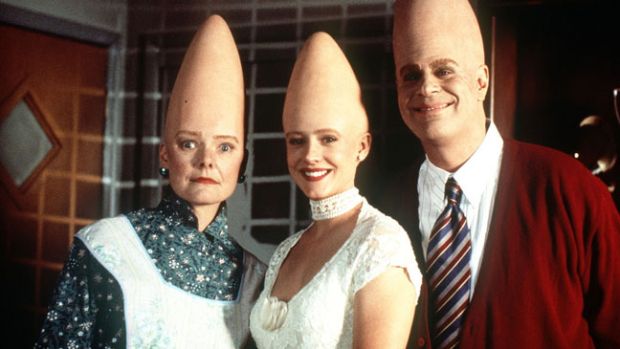Angela
Elite member
- Messages
- 21,823
- Reaction score
- 12,329
- Points
- 113
- Ethnic group
- Italian
Coincidentally, we've just been talking about this on another thread. Apparently, the Huns are to blame. 
See:
https://cosmosmagazine.com/archaeology/deformed-skulls-were-badges-of-belonging
"As they stormed out of the Russian steppes into Roman territory in western Eurasia in the fourth century CE, the Huns were, it is generally accepted, a scary sight.The fear they induced was not merely because of the way they were dressed, how they were armed, or the ruthless way they crushed all who attempted to oppose them. It was more than that: many, perhaps most, of them were physically deformed, their skulls unnaturally huge and protuberant.
They looked, in fact, frighteningly weird. They were warriors from nightmares."
"Among many cultures worldwide, the practice has been known since the Bronze Age, although it was pretty much discontinued across the Roman Empire. What the Huns can lay claim to, the researchers say, is inspiring a massive revival of it in many parts of Europe – even in lands in which they did not set foot."
"Deformed skulls, Pilbrow and Mayall write, weren’t just a method of scaring the hell out of strangers. They were also symbols of belonging.“More than other forms of body modification, such as scarification, tattooing, or dental engraving, intentional cranial modification is a clear mark of ascribed social identity because the individual is never consulted but co-opted into the practice by society to demonstrate some aspect of aesthetic, gender, status or group identity,” they write."
"Across the different cultures, cranial deformation was applied to men and women. Indeed, the skulls found in Georgia, Bavaria and Hungary were predominantly female – although the researchers suggest this could be in part an artefact of sample bias, reflecting the fact that more female skulls have been found."
"The centre of cranial modification practice was undoubtedly Hungary, where the incoming Huns established their settlements. Pilbrow and Mayall report that, although examples of skull deformation dating to the Bronze Age and to the first century CE have been found there, “the highest incidences of cranial modification are seen … after the arrival of the Huns and the pattern persists after the end of the Hunnic empire”.
I know it doesn't take much intellect to ride a horse and murder people, but it can't have had a big effect on cognition, right?
See:
https://cosmosmagazine.com/archaeology/deformed-skulls-were-badges-of-belonging
"As they stormed out of the Russian steppes into Roman territory in western Eurasia in the fourth century CE, the Huns were, it is generally accepted, a scary sight.The fear they induced was not merely because of the way they were dressed, how they were armed, or the ruthless way they crushed all who attempted to oppose them. It was more than that: many, perhaps most, of them were physically deformed, their skulls unnaturally huge and protuberant.
They looked, in fact, frighteningly weird. They were warriors from nightmares."
"Among many cultures worldwide, the practice has been known since the Bronze Age, although it was pretty much discontinued across the Roman Empire. What the Huns can lay claim to, the researchers say, is inspiring a massive revival of it in many parts of Europe – even in lands in which they did not set foot."
"Deformed skulls, Pilbrow and Mayall write, weren’t just a method of scaring the hell out of strangers. They were also symbols of belonging.“More than other forms of body modification, such as scarification, tattooing, or dental engraving, intentional cranial modification is a clear mark of ascribed social identity because the individual is never consulted but co-opted into the practice by society to demonstrate some aspect of aesthetic, gender, status or group identity,” they write."
"Across the different cultures, cranial deformation was applied to men and women. Indeed, the skulls found in Georgia, Bavaria and Hungary were predominantly female – although the researchers suggest this could be in part an artefact of sample bias, reflecting the fact that more female skulls have been found."
"The centre of cranial modification practice was undoubtedly Hungary, where the incoming Huns established their settlements. Pilbrow and Mayall report that, although examples of skull deformation dating to the Bronze Age and to the first century CE have been found there, “the highest incidences of cranial modification are seen … after the arrival of the Huns and the pattern persists after the end of the Hunnic empire”.
I know it doesn't take much intellect to ride a horse and murder people, but it can't have had a big effect on cognition, right?


